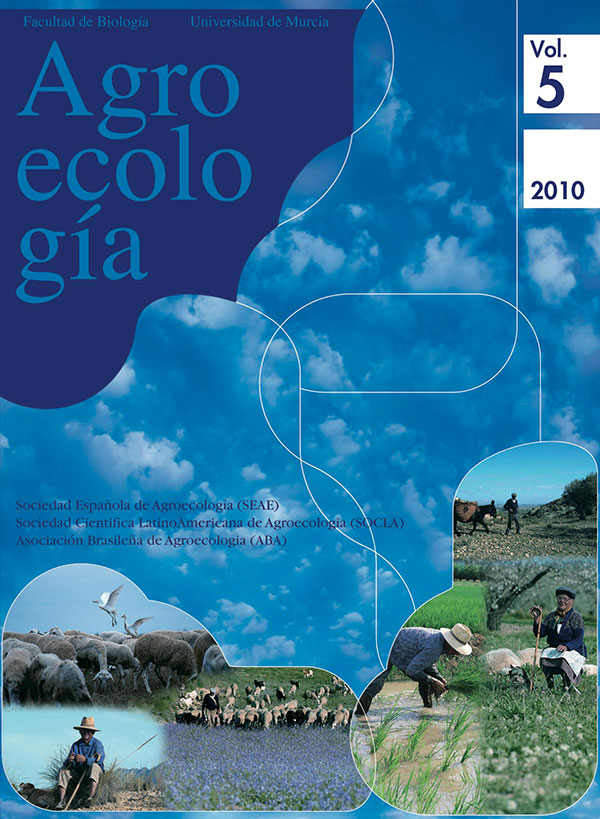Study of the edaphic macrophauna (orden araneae). It richness and abundance in conventional and agroecological greenhouses in La Plata, Argentina
Abstract
Taking into account the ecological role of spiders in agroecosystems, the aim of this paper was to study its richness and abundance in two greenhouses in La Plata, one under conventional management (IC) and another in agroecological transition (IT). Individuals were capture using pitfall traps. It was collected 2818 individuals in IT and 1585 in IC, which belonged to 21 families: 20 in (IT ) and 19 in (IC). The Families better represented were Lycosidae, Linyphiidae, Hahnidae, Tetragnathidae, Anyphaenidae and Corinnidae. It was found similar guilds under both managements and similar proportions between them.The better represented groups in both treatments were hunter running spiders and spinning wanders of irregular web like sheet. Nevertheless it was observed differences in abundance, may be related to IT management based on a reduced use of agrochemical, higher biodiversity of crops and spontaneous plant that favor habitat, shelter and food for spiders, which would act as potential pest controllers. Pesticide reduction and increase in biodiversity are fundamentals strategies to take into account to reach biotic regulation in agroecosystems.Downloads
Las obras que se publican en esta revista están sujetas a los siguientes términos:
1. El Servicio de Publicaciones de la Universidad de Murcia (la editorial) conserva los derechos patrimoniales (copyright) de las obras publicadas, y favorece y permite la reutilización de las mismas bajo la licencia de uso indicada en el punto 2.
2. Las obras se publican en la edición electrónica de la revista bajo una licencia Creative Commons Reconocimiento-NoComercial-SinObraDerivada 3.0 España (texto legal). Se pueden copiar, usar, difundir, transmitir y exponer públicamente, siempre que: i) se cite la autoría y la fuente original de su publicación (revista, editorial y URL de la obra); ii) no se usen para fines comerciales; iii) se mencione la existencia y especificaciones de esta licencia de uso.
3. Condiciones de auto-archivo. Se permite y se anima a los autores a difundir electrónicamente las versiones pre-print (versión antes de ser evaluada) y/o post-print (versión evaluada y aceptada para su publicación) de sus obras antes de su publicación, ya que favorece su circulación y difusión más temprana y con ello un posible aumento en su citación y alcance entre la comunidad académica. Color RoMEO: verde.





